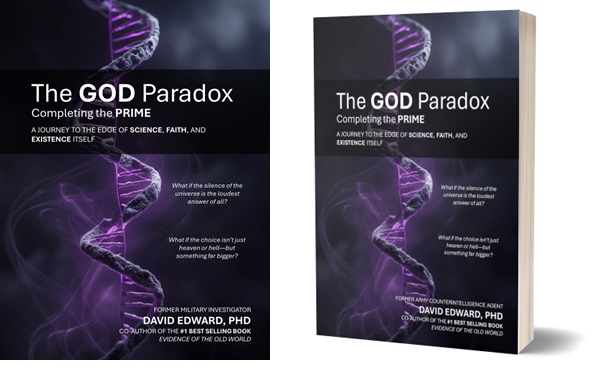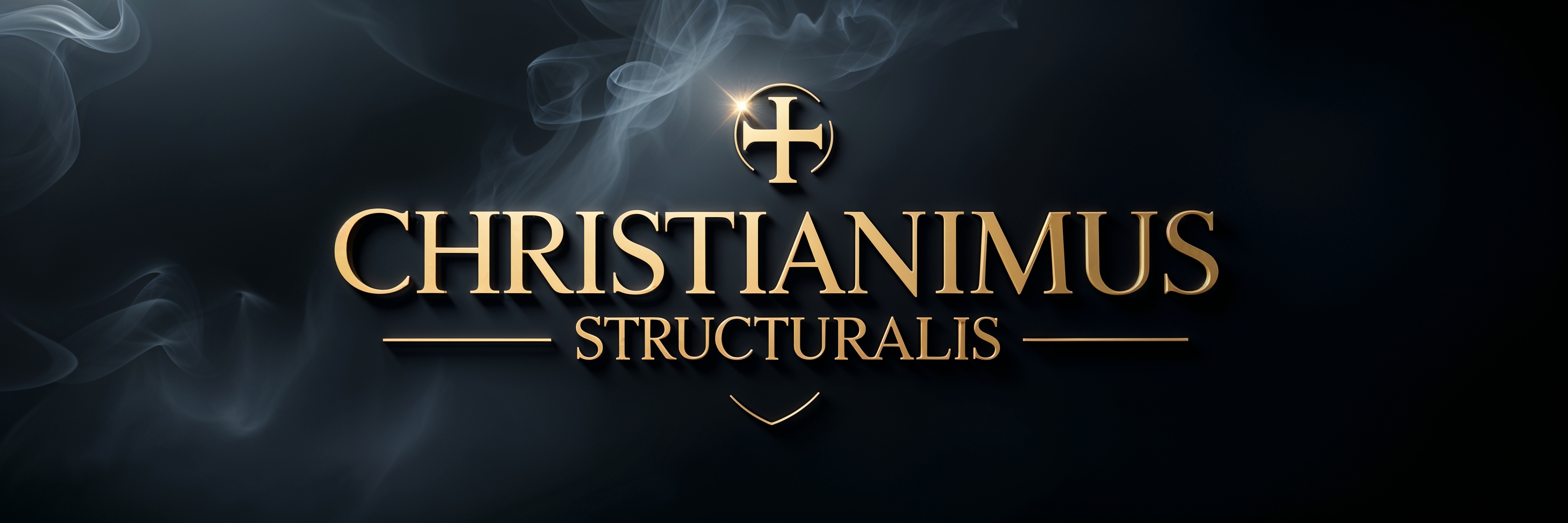.jpg)
Section One: The Question and the Hidden Architecture
Have you ever stopped, truly stopped, to wonder why we struggle the way we do? Not just with obvious mistakes, but with the quiet, persistent weight inside us. Why we say the wrong thing when we mean well. Why we do what we later regret. Why there is something in us that seems slightly off, and not just once, but often.
Now and then, in those rare quiet moments, we feel it. Not as a thunderclap, not as a shout, but as a whisper, something subtle and deep, a silent tremor running beneath the surface of our lives.
The question emerges gently, like a tide pulling at the edges of our certainty: What is really going on with us? Not just with you, not just with me, but with all of us.
If you look long enough, past the noise of culture and the distractions of daily life, you will see it, a pattern, a problem, something ancient and universal. We falter again and again, often against our best intentions, and the usual answers, just be better, just try harder, never resolve it.
What if this pattern is not merely personal? What if it is not only about choices, habits, or influences? What if our struggle points to something deeper, something built in, something embedded?
What if what we call sin is not merely the breaking of a rule, but the symptom of a deeper disruption?
This is not about judgment or shame; it is about clarity. Before you can heal something, you must understand what is actually broken.
So we begin with a simple, profound question: What is sin? Not what have you done wrong, not what does religion tell you to avoid, but truly, what is it?
On this journey, sin is not a moral scorecard. We are asking about architecture, blueprint, design. What if the flaw is not just in behavior, but in the code? If so, what does that say about redemption, purpose, who we are, and what we were made to be?
Many have tried to answer before. Philosophers, theologians, writers, and preachers say sin is disobedience, missing the mark, living without God. Each is partly true, yet incomplete. They explain effects, not cause.
What if sin is more than a list of failures and instead a fracture in the system itself? Maybe our missteps are connected, flowing from an inherited misalignment that reaches back to the foundation of human life.
You do not fix a cracked wall by repainting it. You do not cure a disease by ignoring symptoms. You do not heal a soul by pretending its pain is a phase. If the flaw is in the design, the repair must reach that deep.
This journey is not about behavior management, guilt, or rule following. It is about structural clarity. We peel back layers, not to expose in shame, but to reveal in truth, because only when you see what is broken can you hope for restoration.
So let us look beyond surface answers and explore the hidden structure under the chaos. We may discover that sin is not simply a crime or tally mark, but a disruption, a corruption seeded into the system, embedded in how we are made.
It is a corrupted architecture that makes our best intentions feel like running uphill through sand. We are born into a system already tilted, and no amount of willpower can fully right what was twisted before we arrived.
This is not an excuse; it is a wake-up call. If the structure is broken, patching the surface will not work. If the system is flawed, redemption must go deeper than resolutions or ritual.
We need more than forgiveness; we need realignment. That is what this path offers, a movement from exposure to restoration, from inherited distortion to reclaimed identity.
As we recognize internal sabotage, something else appears, a possibility. Healing and reprogramming are possible; what was broken can be reset, not through effort, but through alignment. It starts with seeing, continues in surrender, and moves through structural change.
This journey will challenge tradition and ask us to consider things as they are. We walk it not in fear, but with quiet expectation. If the problem was misunderstood, the solution was likely missed. If sin is the effect of misaligned structure, we need correction of design. That is where hope and restoration begin.
Take a deep breath. Let defenses go quiet. Listen, not for shame or accusation, but for truth, because truth, even when it cuts, carries hope. The first layer is peeled back, and the journey has begun. Let us walk it together.
Section Two: The Framework of Structural Christianity
Something feels off, does it not? You wake, go through your day, and beneath the surface a feeling lingers. It is the sense that the world itself is broken, not just morally or politically, but structurally, deep in its bones.
Pain, division, violence, confusion, promises that do not hold, people longing for peace yet repeating patterns, nations collapsing, ideas unraveling. Ask why, and religion says, have faith, science says, it is random, philosophy gives more questions.
What if the truth is simple? What if a structure behind all this explains not only what is wrong but why anything works? What if Christianity is not just belief, but the blueprint of reality?
This is Structural Christianity. Once you see it, you cannot unsee it. It is not mere theology or tradition; it explains the world, your life, creation, everything. At the center is a pattern: Father, Son, Holy Spirit. These are positions in a real cosmic structure.
The Father is the Prime, the unchanging source. The Son is the Second vantage, the Divine Champion, free yet aligned. The Spirit is the Living Bond, connecting Prime and Second without dissolving distinction.
This explains why evil exists, why Satan had freedom, why free will is essential, why heaven and hell are outcomes of alignment or disconnection.
Long before Christ, another held the Second seat, meant to preserve order with freedom, but he turned inward. He sabotaged the system. Sin began as structural flaw, not isolated behavior.
Rather than erase freedom, God set a rescue plan. Christ, the new Champion, entered the same freedom and chose alignment. Romans 5:19 says one man’s obedience makes many righteous. Christ replaced the failing system.
Salvation is structural transition. Prayer, repentance, and worship are acts of realignment. The Church is the community of those realigned. Hell is structural removal of what refuses alignment.
Events such as Babel and Pentecost now make sense. Babel shattered a corrupted network; Pentecost reconnects language in Spirit-filled unity. Our cosmic silence is quarantine until sabotage is resolved.
Geology speaks of an ancient Earth, while Scripture marks moral accountability. The meltdown was recent; the planet may be older. Structural Christianity is the framework behind the gospel, revealing why the gospel works.
Section Three: The Nature of Sin and the Caretaker Vantage
What is sin? People say it is moral failure, breaking law, missing the mark. Yet we fail even when we want to succeed. Paul cries in Romans 7, “The good I would I do not.” Jeremiah says the heart is deceitful.
Sin in the structural view is not only action; it is inherited, embedded, passed down through the collapse of a vantage never meant to fall. Romans 3:23 says all have sinned. This points to condition, not mere behavior.
The biblical story begins with design, a divine structure once whole. At its center was the caretaker vantage, meant to preserve creation. The first occupant rebelled, misusing freedom. Tradition names him Satan, the defective original Champion, who injected sabotage into creation’s code.
Thus sin is structural. Instincts and desires are bent. We need more than improvement; we need a new structure. Genesis shows humanity made in God’s image, but the serpent offers autonomy, shifting alignment. The sabotage takes hold.
Psalm 51:5 speaks of being shaped in iniquity, signaling tilted system. Isaiah and Ezekiel describe the fallen one, perfect until iniquity found him. Romans 5:12 says sin entered through one man. John 8:44 shows humanity aligned with the failed vantage.
We cannot fix this by effort. We need a restored occupant. John 1:14 tells of the Word made flesh. Christ resets the code. First John 3:8 says the Son came to destroy the works of the devil. Colossians 1:13 speaks of deliverance into the kingdom of the Son. Salvation is realignment with an unbroken design.
Section Four: The Implications of Structural Sin
If sin is structural, salvation must be structural as well. We were born into a collapsed system governed by a corrupted Second vantage. The saboteur’s imprint affects instincts, biology, and society.
Effort alone is insufficient. Christ replaces the failed caretaker. The decision we face is which structure we will inhabit, the inherited sabotage or the restored alignment in Christ.
Alignment brings humility, knowing we all share the inherited fracture, and compassion toward others trapped in sabotage. Cycles of violence and collapse are echoes of structural failure, showing laws and revolutions cannot fix the core.
True freedom is choosing from the right vantage. Jesus says real freedom is found in the Son. Spiritual disciplines become calibrations, worship becomes a signal pointing back to the original structure, and the gospel is rescue from collapse.
The Church is the prototype of realigned people. God allows time for freedom, replacing rebellion by revelation rather than force. The world is breaking and being healed simultaneously. The saboteur still ripples, but the Champion has come. We choose alignment with the enduring structure.
Section Five: The Structural Resolution and Human Role
We have seen a cosmic sabotage, a failed caretaker, and a restored Champion. Now we step toward restoration. We switch from failed to faithful, from sabotage to alignment.
The problem was structural, not your identity. You were made in the image of the Prime. Christ reoccupies the Second seat and invites you into the restored system. Alignment is a daily process, touching speech, work, relationships, and thoughts.
Every moment echoes either the sabotage or the Prime. Living aligned means letting the Spirit shape integrity and rhythm. Small decisions reflect larger alignment, and over time the old sabotage feels foreign as shame loses grip.
The aligned life becomes a signal that freedom and obedience can coexist. Restoration is not retreat but purposeful rebuilding in family, work, and society. Perfection is not required, awareness is. When you stumble, realign.
As more people switch vantage, the world shifts, not by force, but through a body of people grounded in an unbreakable structure. The future the Champion calls us into is one where freedom leads to peace.
Section Six: The Gospel of Alignment, Living in the Structure That Endures
We began by asking, What is sin? We discovered structure, configuration, and design at the heart of reality. The triune order of Prime, Champion, and Bond explains freedom, evil, and redemption.
The original caretaker turned inward, introducing fracture. Sin is where we live until we step out. Salvation is structural transfer, a change of operating system, returning to the Prime through the faithful Champion, held by the Bond.
Structural Christianity clarifies Scripture and the Church’s purpose: guiding people toward realignment. The task now is to live from a new vantage. Christianity is the structural restoration of reality.
The miracle is participation. Salvation is stepping into Christ’s structure. Prayer, worship, and fellowship become expressions of alignment. Though sabotage still ripples, you are tethered to an unshakable system.
Alignment turns ordinary life sacred. Each choice reflects structure. Failure leads to recalibration, not despair. The saboteur’s hold is temporary; the enduring system is governed by the Prime, aligned through the Son, sustained by the Spirit.
You belong to this eternal order. Live from it, stand in clarity, and signal to the world that the structure stands because Christ holds the seat, the Prime never changed, and the Spirit flows. The gospel is alignment, and you have been aligned. Amen.







